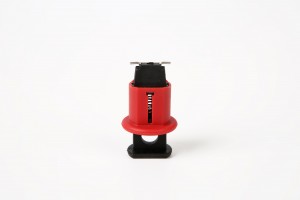In any industrial workplace or facility, ensuring the safety and security of workers should always be the top priority. One potential hazard that workers often face is the risk of electrocution or electrical accidents. To address this, the use of circuit breaker lockout procedures becomes crucial, as it offers a reliable and efficient solution to prevent such incidents from occurring.
In industrial settings, worker safety is paramount. Electrical hazards can pose serious risks to employees, making the use of circuit breaker lockout procedures a vital safety measure. This article delves into the importance and various applications of circuit breaker lockout devices, including safety circuit breaker lockout, single pole breaker lockout, and circuit breaker lockout tagout devices.
Safety Circuit Breaker Lockout: Enhancing Worker Safety
Safety circuit breaker lockout is specifically designed to enhance the safety of workers during maintenance or repair work on electrical panels. These lockout devices are constructed from durable and non-conductive materials, capable of withstanding extreme conditions. They come in various sizes and shapes to ensure a secure fit over the breaker toggles. This effectively prevents the accidental or unauthorized re-energization of the circuit being worked on.
Single Pole Breaker Lockout: A Convenient Solution
Single pole breaker lockout is a commonly used type of circuit breaker lockout in industrial settings. These devices are tailored for single pole circuit breakers, and they offer ease of installation and removal. Featuring a clamp-style mechanism, they securely fasten around the breaker toggle, preventing accidental switch operations.
Circuit Breaker Lockout Tagout Devices: Clear Communication
Circuit breaker lockout tagout devices are essential for effective lockout procedures. Lockout tags allow workers to clearly communicate the status of the locked-out circuit to others, ensuring that no one attempts to energize it. These tags are often brightly colored and display prominent warning labels, providing clear visual cues to prevent potential accidents. They are typically attached to the lockout device installed on the breaker, making it easily visible and identifiable.
Safety Guidelines for Circuit Breaker Lockout
When implementing circuit breaker lockout procedures, it is crucial to follow a set of guidelines to ensure optimum safety:
Use Proper Lockout Devices: Workers should always use lockout devices designed for the specific circuit breakers they are working on. Using improvised methods or inadequate devices can compromise safety.
Effective Communication: Communicate the lockout status using appropriate lockout tags and labels. Clear and concise instructions should be provided to all personnel involved to avoid any confusion or misunderstandings.
In conclusion, circuit breaker lockout is a vital safety measure that significantly reduces the risk of electrical accidents and ensures the well-being of workers in industrial settings. Safety circuit breaker lockout, single pole breaker lockout, and circuit breaker lockout tagout devices collectively provide a comprehensive solution for isolating and securing electrical circuits during maintenance or repair work. By adhering to proper lockout procedures and employing reliable lockout devices, industries can create a safer work environment and protect their workers from potential electrical accidents.
Post time: Oct-23-2023

